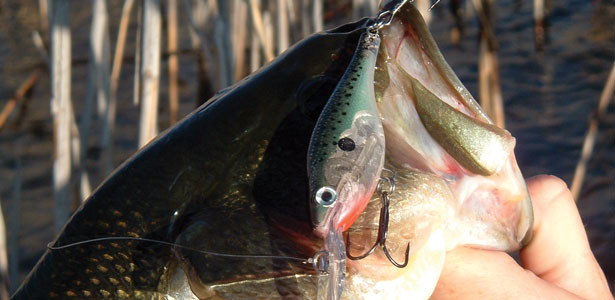
As you probably know seasonal patterns are the basic combinations of water depths, locations and feeding habits shared by most bass in each season of the year. They provide the most predictability in all bass fishing. Seasonal patterns will give you a starting point on any given piece of water you may be fishing in. The seasonal behavioral and movement patterns of bass should be the same no matter where you are. A bass is a bass, regardless whether it lives in Natal, Cape Town or Johannesburg. It will follow certain predictable movements from season to season.
Once you have worked out these seasonal patterns you should have a basic idea on what to do before you even launch your boat. They will help you eliminate two thirds of a dam even before you leave home. One thing, please remember to keep an open mind whilst reading this.
Doing this makes it slightly easier and a lot less intimidating and more time efficient. Imagine arriving at the water knowing in your mind that you only have a third or a fourth of that body of water left to explore, and it starts to make a little more sense.
A Look Back
You cannot talk about winter seasonal patterns without first considering autumn. The two seasons are connected, and the transition between the two can sometimes be misunderstood. Autumn patterns are associated with the movement of the fish activity zone away from normal summertime places (like the main lake or heavily weeded bays that hold baitfish such as all the different kurper species). These small baitfish also start to move around at this time.
The bass don’t really migrate as such, it’s just that their activity zone moves. There are still bass up in these bays or down in the dam, but they are not as active because their food is not as plentiful.
As the water temperature drops, the fish feed daily until it reaches around 50 degrees Fahrenheit (about 10 degrees Celsius). Then their metabolisms force them to slow down eating. There is still a time during most days when they will feed fairly actively. Reaction strikes are more common at this time of the year. The key lures I like to use are baits that imitate the baitfish. Spinnerbaits and crankbaits for me are the best for doing this job.
Match the size and colour of lures to the available baitfish and choose lures that will penetrate the zone where the fish are hanging out. If there is plenty cover, then weedless lures like spinnerbaits, worms and soft jerkbaits work best for me. If the bass are more in the open water, then I switch to a Rapala DT06 or a Rapala DT10 in natural colours.
I choose lure depth based on water colour and the depth that I may see baitfish activity. I use a Humminbird 1198c SI Combo unit to do this job, and I find this particular unit to be very accurate with its readings.
Winter Patterns
Now we can start talking about winter. This is the season water temperatures typically drop below 50° F. In this season, the key is convex structure and deeper banks or deeper weed beds. Normally the baitfish move to deeper water and so do the bass. I fish the deeper side of the structure or cover I’m fishing with my Rapala cranks. Depth is the key now so it’s vital to have good electronics to make your job a lot easier. Any natural looking bait will work well in this situation. A DT10 in bluegill being my favourite bait and colour. These baits are so real you could easily mistake them for the real thing. They are also very buoyant so to fish through deep grass becomes an absolute pleasure. The objective is to get them when they hungry, but reaction bites will also put fish in the boat.
Cold Blood
Understanding bass behavior begins with its cold-blooded nature. The first really important change in food habits for a bass population occurs in spring as the weather warms up to about 50° F. That is when our crustacean buddies such as crabs come out of dormancy or hibernation. I don’t know if they really hibernate, but they certainly become dormant in winter and possibly inaccessible to bass. At around 50° F most species of crabs become active.
In winter when the water is really cold it can take a bass approximately a week to digest its food. As the water warms, its metabolism increases so that by the time the water reaches 50°F, it may only take five days to digest their food.
This is a very important factor that has to be considered, because it not only impacts digestion rate and metabolic rate- it can be an indication of how hungry a certain bass will be at that time, and whether it is likely to be aggressively searching for food or at least be susceptible to an opportunity, such as offered by our good looking crank baits!
The really important aspect, I think, is that bass become what I define as being a normally opportunistic predatory animal that is catchable in water between 55°F and 85°F, usually any way. Once the temperature gets above or below this, we all find it tough to get the fish to bite. I will now slow down my presentation significantly in order to prompt a bass to bite. Ideally you should downsize your baits and try really hard to imitate the baitfish they might be feeding on to get more stikes.
Winter can be a very frustrating time to fish. The weather is not conductive to having a lot of fun, but if you don’t mind your hands being cold or your lips chapped it can still be a fun time. This is when you know that although your bait is surrounded by bass it just takes so much longer to get a bite. Hold tight! They do bite, eventually. That’s one thing about winter: it may just be your lucky day. Something tells those bass to feed. I mean now, right now! You can have an absolutely awesome time in just half an hour. They feed aggressively, but as quickly as they came on the bite, they can go off the bite. Always be aware to help make the pattern easier to work out. Baitfish activity must be monitored at all times. This helps.
When I go out in winter, I go to have fun. I certainly don’t arrive at five in the morning like in summer. Get there when it’s already fairly warm and leave before dark. Fishing must be fun, so involve the whole family; it’s really great to get them out in the fresh air and wet some lines.
Hope this gets those rods out and the boat ready – enjoy.
* Darryl Quinton is a member of the Rapala Pro Staff. His motto: “Fishing is fun!”


 Visit us our
Visit us our